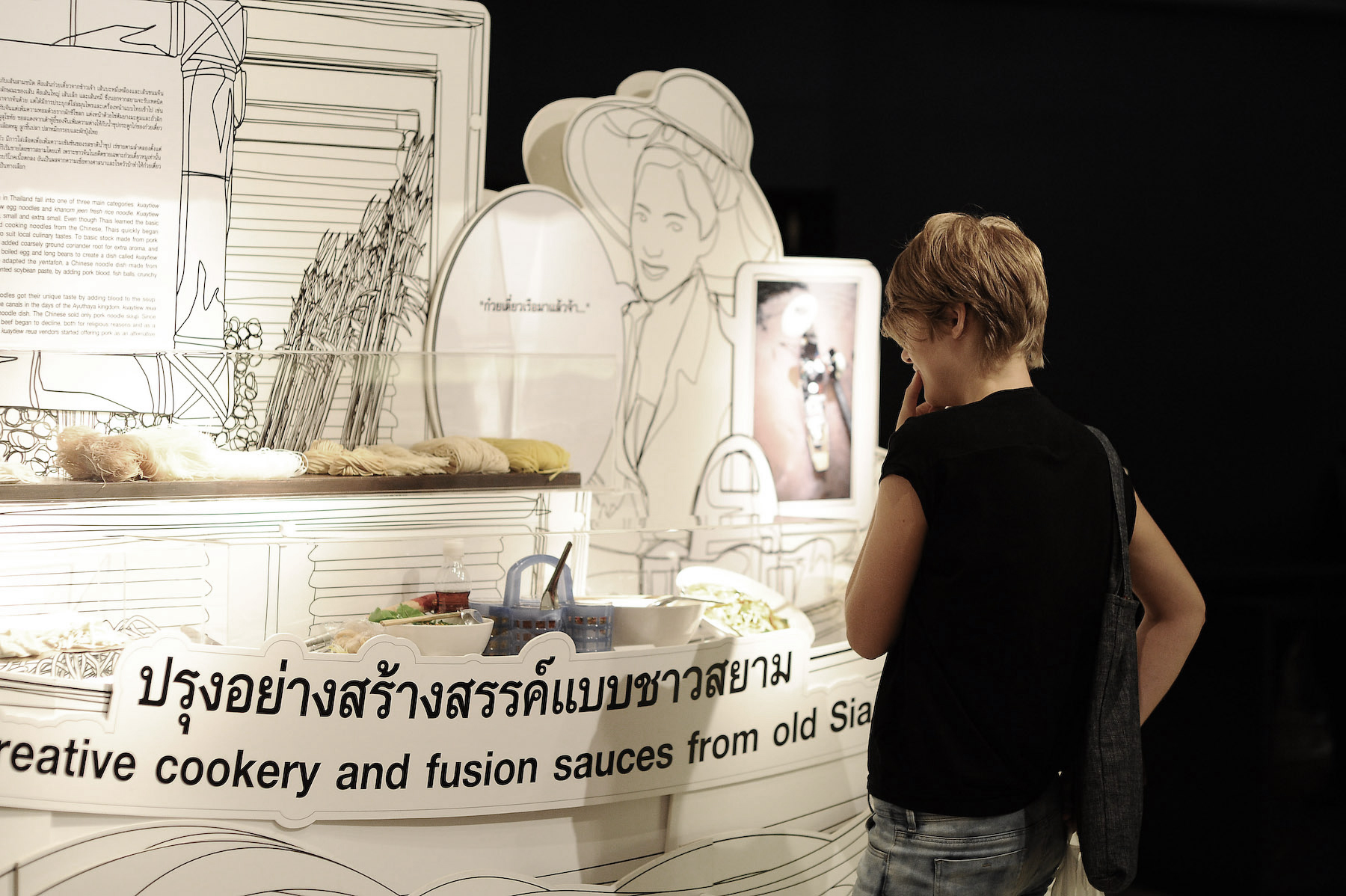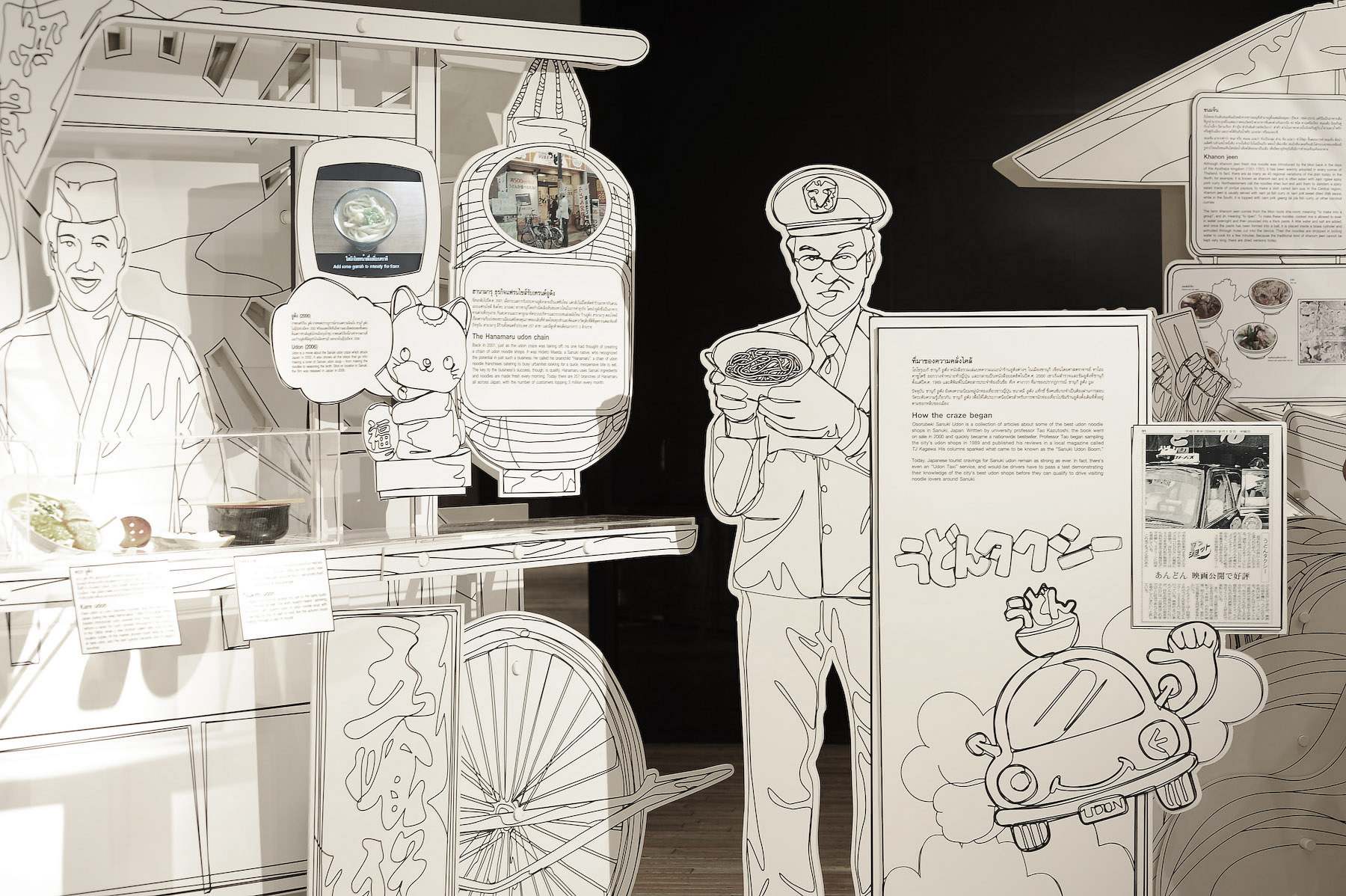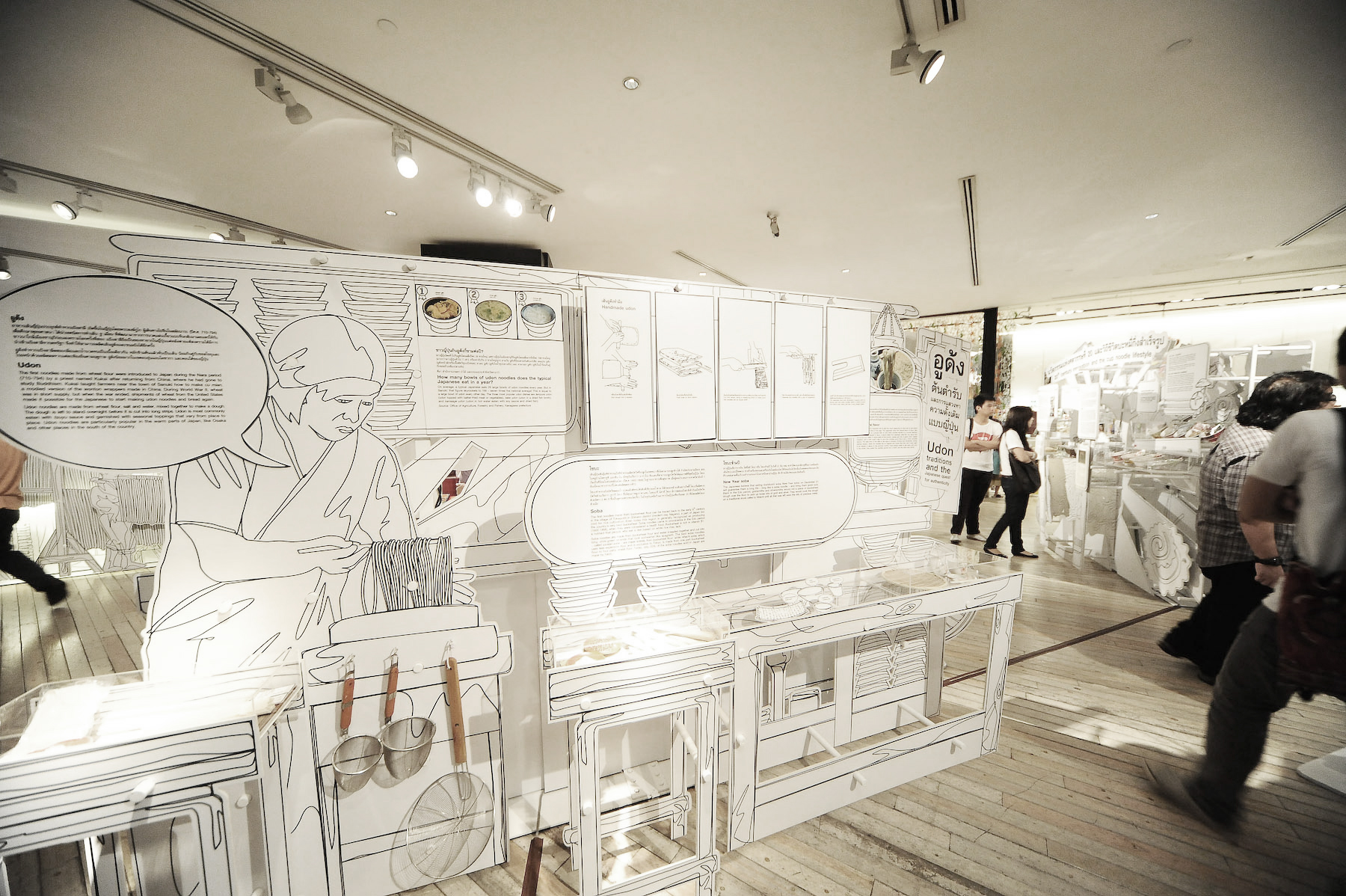What’s In My Noodle /
TCDC Bangkok
On any given day, more than a quarter of the global populace eats some sort of noodle, pasta or cooked dough. The global retail market value for noodles in 2008 stood at 30.47 billion US dollars, with the pasta market coming in second at some 22.6 billion US dollars (Euromonitor). And that’s not counting the volume of noodles and pasta made at home, off the statistical radar.
From the humble Chinese hand-pulled noodle to fine Japanese barley soba and Italian fusilli swirls, the history of cooked dough is one born of necessity and refined by place, time and technical skill. How did the ancient need to preserve excess wheat or rice stocks after harvest end up in such a variety of contemporary tastes and textures? Not much could have happened without the invention of grain mills, helping farmers transform their wheat, millet or rice into flour.
As the noodle migrated throughout Asia, it incorporated local grains and spices. Throughout Japan, we can still experience noodle shops reproducing traditional udon and soba recipes at least three to four hundred years old. In Siam, the hub of trading routes linking the Occident with the Orient since the 16th century, sauces and seasonings cross-bred with multi-ethnic cooking, resulting in Thailand’s creative fusion noodle cuisine today. But the most thorough evolution of the humble flour-and-water mix has to be in Italian pasta, which applied the scientific method to pasta design. How quickly would dough of a certain shape and consistency cook? How much sauce should it be designed to absorb? These details were all studied meticulously to meet the needs of regional cooking at first, and later of industrial production.
At the end of the trail is the cup noodle, a food and lifestyle icon of the late 20th century. Infiltrating every social class, from the urban harried to the rural poor, the instant noodle morphed itself through topping, seasoning and packaging, to earn itself a place in every household on the planet. Noodle’s 4,000 year old story underlines the key role of human ingenuity in creating ever new means of food production. Without them, where would we be?











